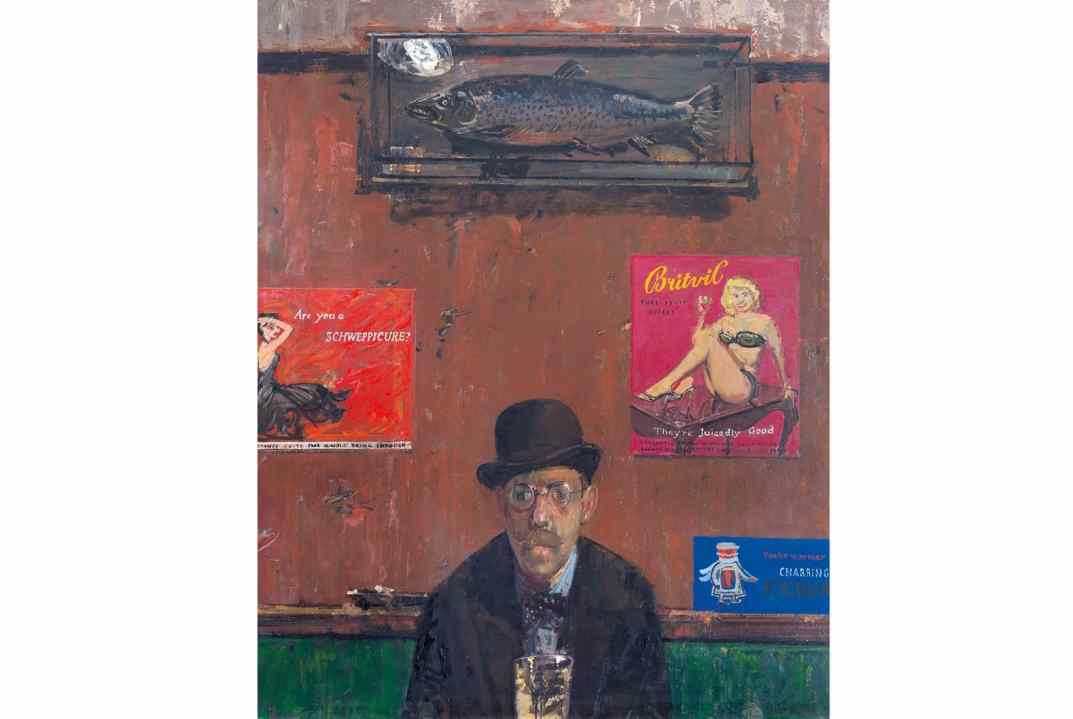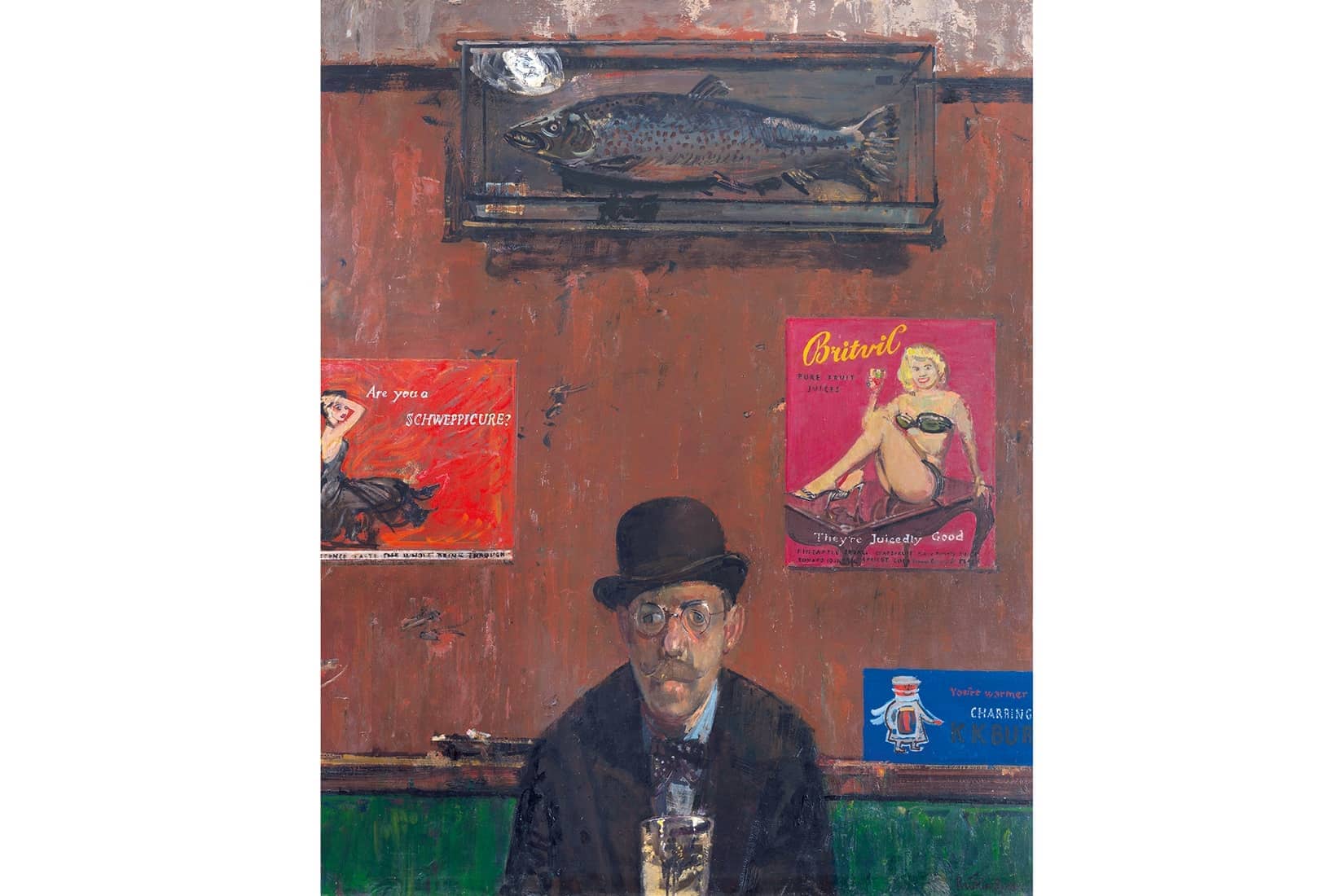Where do you see paintings by Ruskin Spear (1911–90)? In the salerooms mostly, because his work in public collections is rarely on display. Until the National Portrait Gallery closed for redevelopment it was, however, possible to study Spear’s splendid portrait of ‘Citizen James’ (Sid James) peering from a black and white TV screen, and his oil sketch of Harold Wilson wreathed in pipe smoke, the epitome of political cunning. Both were strikingly more convincing than their companion array of anodyne commissioned images.
Like his beloved Sickert, Spear painted commissioned portraits but also took to making enigmatic ‘unofficial’ portraits based on press photographs — or, in the case of Sid James, a snap off the telly. The first of these spirited commentaries on the great and the not-so-good was a large unflattering painting of Churchill speechifying at the microphone. This was greeted with hostility when hung at the Royal Academy Summer Exhibition in 1957. It is now lost, possibly destroyed, though a smaller version hangs in the Beaverbrook Art Gallery in Canada. This was followed by Spear’s swagger portrait of Princess Margaret en route to Balmoral. Over seven feet in height, ‘Catching the Night Train’ hung briefly at the Summer Exhibition of 1959 before being taken down because the picture ‘could be construed as satirical’. True enough — but it remains the best modern picture of a royal aside from Sickert’s nervy Edward VIII in his Welsh Guards uniform. Sadly, the Princess Margaret painting is in a private collection, as is Spear’s extraordinary attacking portrait of Enoch Powell entitled ‘Study Against a Black Background’, painted shortly after his inflammatory ‘rivers of blood’ speech.
No one painted men and women nursing a drink in a back bar more tenderly than Spear
Spear could paint lyrical townscapes when he chose. His ‘Snow Scene’ of 1946 , a view up Rivercourt Road in Hammersmith, the punctum the Methodist church spire on the corner of King Street, is in Tate Britain (though not at present on display).








Comments
Join the debate for just £1 a month
Be part of the conversation with other Spectator readers by getting your first three months for £3.
UNLOCK ACCESS Just £1 a monthAlready a subscriber? Log in